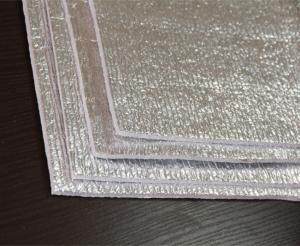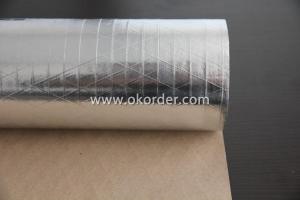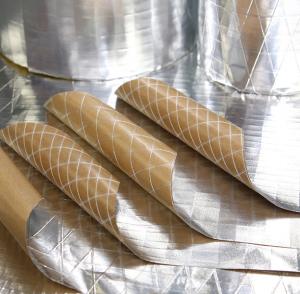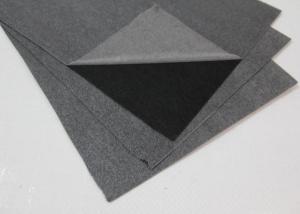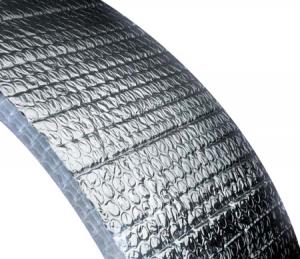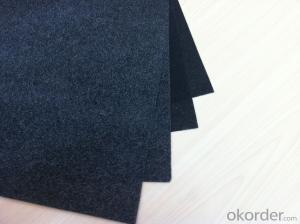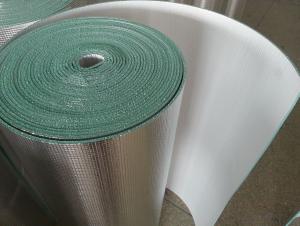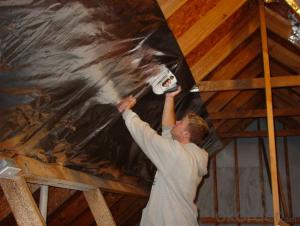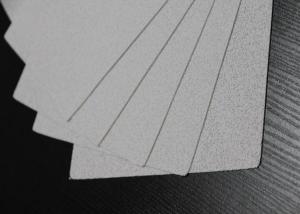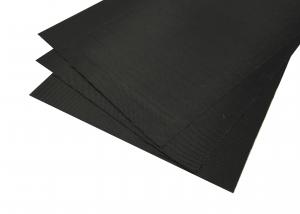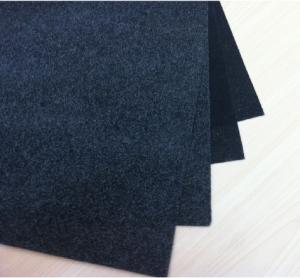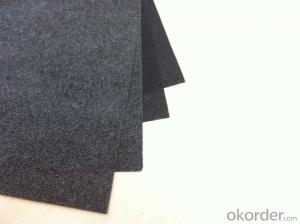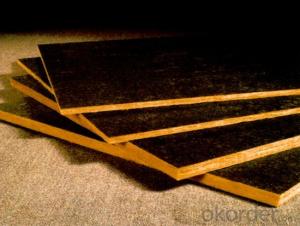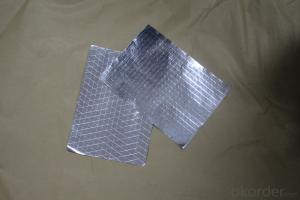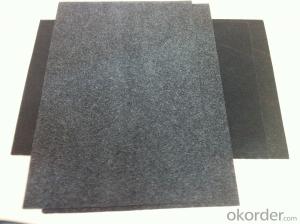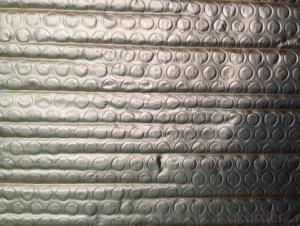CEILING USEING BLACK FIBERGLASS TISSUE-65E
- Loading Port:
- Shanghai
- Payment Terms:
- TT OR LC
- Min Order Qty:
- 500 m²
- Supply Capability:
- 100000 m²/month
OKorder Service Pledge
OKorder Financial Service
You Might Also Like
Introduction of Fiberglass Tissue
Fiberglass Tissue is a kind of facing, which is made of by the white fiberglass tissue, and special production process.
Application of Fiberglass Tissue
Our black tissue are mainly used as facing for glass wool insulation, rockwool, mineral wool etc. Also fiberglass tissue facing is used under roof decking, under attic rafters, over existing attic thermal insulation, in floors, walls and crawl spaces, and in industrial and commercial buildings to block radiant heat coming into house through the roof during the summer and retain indoor heat generated during in winter
Advantage of Fiberglass Tissue
Light weight
• High manufacturing accuracy
• High strength
• Heat resistant, water proof, stable at high temperature;
• Environmentally friendly, no smell and not-toxic;
• Smooth and clear surface;
Packing of Fiberglass Tissue
1. Waterproof paper then PVC shrinking Film
2. Water-Proof film only
3. Woven cloth
4. Kraft paper or Water Proof Film then Metal/wooden pallet
5. (Also as your request. )
Specification of Fiberglass Tissue
Specification | ||
ITEM | UNIT | VALUE |
Weight | g/m2 | 160 |
Thickness | mm | 0.2 |
Density | /cm | 12×12 |
Oxygen Index Number | % | ≥32 |
Tensile Strength MD | n/125px | 800 |
Tensile Strength CMD | n/125px | 500 |
Fire Resistant Property | B1 | |
Pictures of Fiberglass Tissue

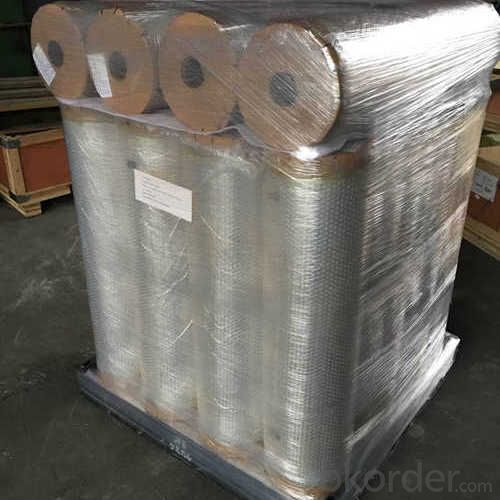
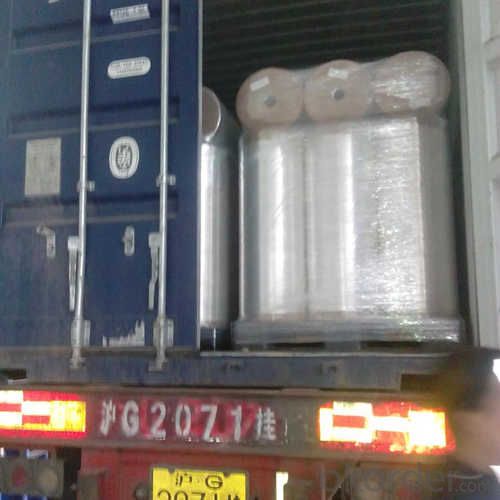

FAQ
We have organized several common questions for our clients,may help you sincerely:
1. What is the storage condition?
The Aluminum Foil Facing should be stored at room temperature and kept from wet and heat source.
2. How to guarantee the quality of the products?
We have established the international advanced quality management system,every link from raw material to final product we have strict quality test;We resolutely put an end to unqualified products flowing into the market. At the same time, we will provide necessary follow-up service assurance.
3. How long can we receive the product after purchase?
In the purchase of product within four working days, we will arrange the factory delivery as soon as possible. The specific time of receiving is related to the state and position of customers. Commonly 7 to 10 working days can be served.
- Q:Is fiberglass facing fire-resistant?
- Indeed, fiberglass possesses fire-resistant qualities. Its composition comprises a blend of glass fibers and resin, resulting in exceptional resistance to heat. Fiberglass exhibits the ability to endure elevated temperatures without undergoing melting or emitting harmful fumes. It finds frequent application in scenarios where fire resistance holds paramount importance, including insulation, protective garments, and building materials. Nonetheless, it is crucial to acknowledge that the fire-resistance attributes of fiberglass may be influenced by the substances it is coupled with, such as adhesives or coatings.
- Q:What is the typical thickness of fiberglass facing?
- The typical thickness of fiberglass facing ranges from 0.2 to 1.0 millimeters.
- Q:Are there any health concerns associated with fiberglass facing?
- Yes, there are health concerns associated with fiberglass facing. Fiberglass is made up of tiny fibers that can become airborne when disturbed, such as during installation or removal. Inhalation of these fibers can irritate the respiratory system and cause symptoms like coughing, chest tightness, and difficulty breathing. Prolonged exposure to fiberglass fibers can also lead to a serious lung condition called fibrosis, where the lung tissues become scarred and stiff. Additionally, fiberglass can cause skin irritation and allergic reactions when it comes into direct contact with the skin. The small fibers can penetrate the skin, leading to itching, redness, and rash. To minimize the health risks associated with fiberglass, it is important to take precautions when working with it. This includes wearing protective clothing, gloves, goggles, and a respirator to prevent inhalation of the fibers. It is also crucial to properly clean up any fiberglass dust or debris to avoid further exposure. If you suspect that you have been exposed to fiberglass and are experiencing persistent respiratory or skin symptoms, it is recommended to seek medical attention for proper evaluation and treatment.
- Q:Does fiberglass facing help with soundproofing?
- Yes, fiberglass facing can help with soundproofing. Fiberglass is known for its excellent sound-absorbing capabilities, as it can effectively trap and dampen sound waves. When used as a facing material, fiberglass can enhance the soundproofing properties of a wall or ceiling by reducing noise transmission through it. The facing acts as a barrier that prevents sound from passing through, making it an effective solution for reducing noise pollution in various settings, such as homes, offices, studios, or even industrial environments. Additionally, fiberglass is lightweight, easy to install, and can be easily combined with other soundproofing materials for even better results.
- Q:How is fiberglass facing used in construction?
- Construction commonly utilizes fiberglass facing as a safeguard for insulation materials, effectively applying it to the outer side of insulation boards or blankets. This facing is crafted from woven fiberglass fabric or reinforced foil, bolstering the insulation's sturdiness and resilience. A primary function of fiberglass facing in construction is to serve as a vapor barrier, effectively thwarting moisture from permeating the insulation and reducing the likelihood of condensation and mold growth. By maintaining the insulation's dryness, its thermal capacity endures and its lifespan is prolonged. Furthermore, fiberglass facing also functions as a radiant barrier, reflecting radiant heat and thereby minimizing heat transfer between the surroundings and the insulation. This attribute proves especially advantageous in warm climates or when insulating buildings that receive direct sunlight exposure. Moreover, fiberglass facing enhances the mechanical properties of insulation materials, providing structural reinforcement and guarding against harm during handling, transportation, and installation. It also heightens the insulation system's fire resistance by acting as a shield against flames and curtailing the spread of fire. To summarize, fiberglass facing is an adaptable component employed in construction to augment the performance and longevity of insulation materials. It acts as a vapor barrier, radiant barrier, and protective layer, ensuring that buildings possess effective insulation, energy efficiency, and safety.
- Q:Can fiberglass facing be used in high-temperature applications?
- No, fiberglass facing cannot be used in high-temperature applications. Fiberglass is a type of reinforced plastic material that is known for its excellent thermal insulation properties and resistance to corrosion. However, it has a low melting point and is not suitable for use in high-temperature environments. When exposed to high temperatures, fiberglass can melt, warp, or degrade, compromising its structural integrity and insulation properties. Therefore, it is important to choose alternative materials specifically designed for high-temperature applications, such as ceramic fiber or metal facing, to ensure safety and optimal performance.
- Q:Does fiberglass facing require regular maintenance?
- Regular maintenance is not required for fiberglass facing. Fiberglass is a resilient material that can resist various environmental elements, such as moisture, UV rays, and pests. Unlike other materials, it doesn't corrode, rot, or decay, eliminating the need for frequent painting or sealing. Nevertheless, it's crucial to keep the fiberglass facing clean and clear of dirt and debris to preserve its appearance and performance. To maintain its good condition, regular cleaning with mild detergent and water should suffice. Additionally, prompt repair of any damage or cracks in the fiberglass facing is necessary to prevent further complications. In conclusion, fiberglass facing is a low-maintenance choice that can endure for many years with minimal upkeep.
- Q:What is the lifespan of fiberglass facing?
- The lifespan of fiberglass facing can vary depending on various factors such as quality, maintenance, and environmental conditions. However, on average, fiberglass facing can last anywhere from 20 to 50 years.
- Q:What is fiberglass facing?
- Fiberglass facing refers to a thin layer or sheet made of fiberglass that is used to cover or protect surfaces. It is commonly used in construction and insulation applications to provide strength, durability, and resistance to heat, moisture, and chemicals.
- Q:How does fiberglass facing compare to other types of insulation materials?
- Fiberglass facing is a popular choice for insulation materials due to its numerous advantages over other types of insulation. Firstly, fiberglass facing offers excellent thermal insulation properties, helping to maintain a comfortable temperature inside buildings by minimizing heat transfer. It has a high R-value, which means it provides effective resistance to heat flow. Additionally, fiberglass facing is highly durable and long-lasting. It does not degrade or lose its insulating properties over time, ensuring that it remains effective for many years. This durability also makes it resistant to moisture, mold, and pests, which can be a common issue with other insulation materials such as cellulose or foam. Furthermore, fiberglass facing is easy to install, reducing both time and labor costs. It is available in various forms like batts, rolls, or loose-fill, making it adaptable for different applications and spaces. Its lightweight nature makes it easy to handle and maneuver during installation. One of the key advantages of fiberglass facing is its fire resistance. It is non-combustible, meaning it does not contribute to the spread of fire and can help contain it. This property makes it a safer choice compared to other insulation materials like foam, which can be flammable. Lastly, fiberglass facing is an environmentally friendly option. It is made from natural materials such as sand and recycled glass, reducing its impact on the environment. Additionally, fiberglass insulation can help conserve energy and reduce carbon emissions by improving the energy efficiency of buildings. Overall, fiberglass facing stands out as an excellent choice for insulation materials due to its thermal insulation properties, durability, ease of installation, fire resistance, and eco-friendliness. It outperforms many other types of insulation materials, making it a preferred option for various construction and insulation projects.
1. Manufacturer Overview |
|
|---|---|
| Location | |
| Year Established | |
| Annual Output Value | |
| Main Markets | |
| Company Certifications | |
2. Manufacturer Certificates |
|
|---|---|
| a) Certification Name | |
| Range | |
| Reference | |
| Validity Period | |
3. Manufacturer Capability |
|
|---|---|
| a)Trade Capacity | |
| Nearest Port | |
| Export Percentage | |
| No.of Employees in Trade Department | |
| Language Spoken: | |
| b)Factory Information | |
| Factory Size: | |
| No. of Production Lines | |
| Contract Manufacturing | |
| Product Price Range | |
Send your message to us
CEILING USEING BLACK FIBERGLASS TISSUE-65E
- Loading Port:
- Shanghai
- Payment Terms:
- TT OR LC
- Min Order Qty:
- 500 m²
- Supply Capability:
- 100000 m²/month
OKorder Service Pledge
OKorder Financial Service
Similar products
New products
Hot products
Related keywords




